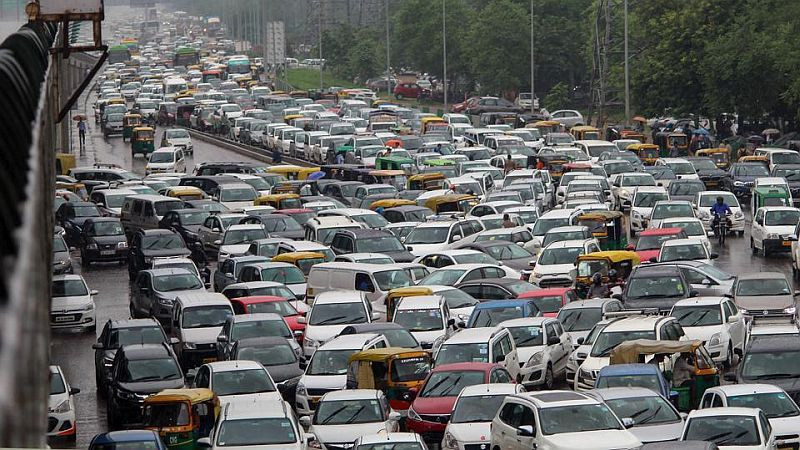Traffic jams are a frequent frustration for many drivers, often leading to significant delays, increased stress, and higher fuel consumption. At Get Drivers Ed, we believe that understanding the causes of traffic congestion can help drivers better navigate these challenges and contribute to smoother, safer roads. Here’s an in-depth look at why traffic jams occur and what we can do to alleviate them.
Common Causes of Traffic Jams
1. High Volume of Vehicles: One of the most obvious causes of traffic congestion is simply too many cars on the road at the same time. This often occurs during rush hour, holidays, or special events. As urban areas continue to grow, the number of vehicles battling for road space significantly increases.
2. Roadway Incidents: Accidents, whether minor fender-benders or major collisions, significantly contribute to traffic jams. Even incidents on the roadside can cause drivers to slow down and look, creating a ripple effect that leads to a backup.
3. Road Construction and Maintenance: Maintenance and construction work are essential for safe and efficient travel, but they also reduce road capacity and force traffic into fewer lanes. Poorly planned or unexpected construction can lead to sudden and severe congestion.
4. Traffic Signal Timings: Inefficiently timed traffic lights can lead to unnecessary stop-and-go traffic in busy intersections, exacerbating congestion. Proper synchronization of traffic lights can help maintain a smoother flow of traffic.
5. Environmental Conditions: Weather conditions like fog, rain, or snow can cause drivers to slow down due to reduced visibility and slippery roads. These changes in driving patterns can quickly lead to congested roads.
6. Behavioral Factors: Human factors such as tailgating, erratic driving, or indecisiveness can also lead to congestion. When drivers do not maintain adequate following distances or make sudden lane changes, they force others to brake abruptly, leading to a chain reaction that slows down traffic.
How Get Drivers Ed Addresses Traffic Congestion
Education on Defensive Driving
At Get Drivers Ed, we teach our students defensive driving techniques that help mitigate some of the human factors contributing to traffic jams. By learning to anticipate the actions of other drivers and maintaining safe driving practices, our students can help reduce the frequency and severity of congestion.
Promoting Awareness of Road Etiquette
We emphasize the importance of proper road etiquette, such as using turn signals, not blocking intersections, and keeping lanes clear when not driving. These practices can significantly improve traffic flow and reduce congestion.
Encouraging Alternative Transportation
We discuss the benefits of alternative transportation options like carpooling, public transit, or cycling, which can decrease the number of vehicles on the road and thus reduce traffic congestion.
Stress Management Techniques
Traffic jams can be stressful, and stressed drivers are more likely to make poor driving decisions. Our courses include techniques for managing stress behind the wheel, ensuring that our students remain calm and collected even in heavy traffic.
Strategies for Navigating Traffic Jams
1. Stay Informed: Use real-time traffic apps and listen to traffic reports to stay updated on current road conditions. Knowing where congestion is happening can help you plan alternative routes and avoid getting stuck in jams.
2. Plan Your Route: If possible, plan your trip during off-peak hours. Early morning or late evening travel can help you avoid the busiest times on the road. Also, consider using less-traveled routes that might take a bit longer but save you from the frustration of heavy traffic.
3. Maintain a Safe Distance: Keep a safe following distance between your vehicle and the one in front of you. This not only helps in reducing the chances of a collision but also allows for smoother traffic flow as it reduces the need for sudden braking.
4. Stay Calm and Patient: Patience is key when dealing with traffic jams. Getting frustrated or aggressive won't help the situation and could lead to dangerous driving behaviors. Practice deep breathing exercises or listen to calming music to keep your stress levels in check.
5. Use Public Transportation: When possible, use public transportation. This can significantly reduce the number of vehicles on the road, thereby easing congestion and reducing your own stress.
Conclusion
Traffic jams are often inevitable, but understanding their causes and learning how to respond to them can make driving a more pleasant and less stressful experience. At Get Drivers Ed, we are committed to providing drivers with the education and tools they need to contribute to smoother traffic flow and safer roads. Enroll in our drivers ed courses today to become part of the solution to traffic congestion. Let’s drive towards a future where traffic jams are the exception, not the norm.
By incorporating these strategies and maintaining a positive attitude, drivers can navigate traffic jams more effectively and contribute to safer, more efficient roadways. At Get Drivers Ed, we believe that well-informed drivers make better, safer choices on the road. Join us in our mission to improve driving experiences and road safety for everyone.


